#Christian Kühn
Explore tagged Tumblr posts
Text
Co w jazzie piszczy [sezon 2 odcinek 44]
premierowa emisja 4 grudnia 2024 – 18:00 Graliśmy: Ali Watson Quartet “Evening Song” z albumu “Terrarium” Nesrine “Ya Lil” z albumu “Ka Ya Makan” – ACT Music Dan Fortin ft. David Occhipinti “Uh Hundred” z albumu “Cannon” – Elastic Recordings Joe Fonda “Inspiration Opus #1” z albumu “Eyes On The Horizon” – Long Song Records Christopher Whitley “for the most part” z albumu “almost as…

View On WordPress
#ACT Music#Ali Watson#April Records#Ben Kono#Berthold Records#Caleb Wheeler Curtis#Christian Kühn#Christopher Whitley#Co w jazzie piszczy#Earshift Music#Edition Records#Elastic Recordings#Entre Amigos#Hamed Sadeghi#Imani Records#Irene Serra#Jeremy Rose#Joachim Badenhorst#Joe Fonda#Joe Webb#Kühn Fu#Klein Records#Lloyd Swanton#Long Song Records#Luca Boscagin#Mikkel Ploug#Nesrine#Oaagaada#Oasis#Rasmus Sorensen
0 notes
Text
Geschafft. Und schwimmend nun - ACT sei gedankt - in Duos von Wollny und Kühn. Wenn auch der Schädel Schillers neu eine Rolle spielt.
Hat jetzt doch länger gedauert, als ich erst glaubte. Ich hatte sogar gedacht, früher fertig zu werden als sonst, weil ich Elster ja schon kannte. Aber die dortigen online-Formulare verändern sich von Jahr zu Jahr, wie mir ein Mitarbeiter an der Hotline, sagte; nicht grundlegend zwar, aber doch spürbar. Und wo ich nach Inhalten buchführe – “Reisen”, “Bankkosten” “Bewirtungen”, “Büro”,…

View On WordPress
#Abschreckungsideologie Atombombe Antisemitismus#ACT Michael Wollny Joachim Kühn#Alban Herbst Rumiz-Rezension#Alban Nikolai Herbst Arbeitsjournal#Alban Nikolai Herbst Arbeitswohnung#Arbeitswohnung Dunckerstraße#Arbeitswohnung Jungfernrebe#Arco Verlag Briefe nach Triest#Bałdych Możdżer#Briefe nach Triest Alban Herbst#Bruno Lampe Helmut Schulze#Bruno Lampe Parallalie#Christian Krachts#Christopher Ecker#Elfenbein Verlag Anderswelt#Finanzamt Elster#Junge Welt AfD#Jungfernrebe Dunckerstraße#Parallalie Dschungel.Anderswelt#Schillers Schädel#Steuererklärung Alban Herbst#Thetis.Anderswelt#Triestbriefe Roman#Wohlklangskitsch#Wollny Kühn Duo
0 notes
Text
Happy Birthday to Christian Emmerich aka Blixa Bargeld, German musician who has been a member of the groups Einstürzende Neubauten, Nick Cave and the Bad Seeds and ANBB, born on this day in 1959, Berlin
📸 Bernd Kühn

#punk #punkrock #blixabargeld #history #punkrockhistory #otd
41 notes
·
View notes
Text
international day against queer hostility reading list recs
based on books I've read and books that are on my (physical) tbr. focused on nonfiction bc there were only like 6 non-queer fiction reads in the past 4 years and that's too long for a post. please add more, if you have more recs!
ENGLISH (different translations available for some)
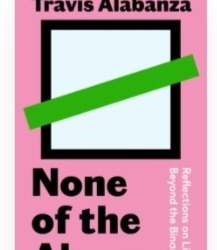
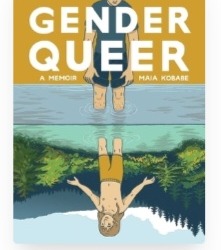
None of the Above by Travis Alabanza
essays on being nonbinary. somewhat literary yet often down to earth writing style.
genderqueer by maia kobabe
graphic novel tracing the author's journey of self discovery regarding their genderqueer identity


ACE: What Asexuality Reveals About Desire, Society and the Meaning of Sex by Angela Chen
well researched essays based on interviews with and extensive research of different experiences of people on the asexual spectrum. it also includes a chapter on aromantic experiences
Rethinking Gender by Louie Läuger
if you're new to the idea of gender as a social construct/issues the trans and genderqueer community faces this is where to start! an introduction and guide to gender as a social construct, making space for different genderqueer identities and all of it with lovely illustrations that help guide understanding. offers prompts to question your own relation to gender (as in a social concept & as in your own gender identity)


To Be Seen. Queer Lives 1900-1950 by Karolina Kühn & Mirjam Zadoff
Before We Were Trans: A new History of Gender by Kit Heyam
Breathe: Journeys to Healthy Binding by Maia Kobabe
fiction recs based on my more recent reads & (physical) tbr
elatsoe by darcie little badger (aroace mc but it's not about elatsoe being aroace; 10/10 friendship rep)
breakaway series by e.l. massey (lots of deconstructing internalised queer hostility)
common bonds by roanna sylver, c.t. callahan, b.r. sanders & claudie aresneault (short stories about experiences of aromantic ppl)
all the things they said we couldn't have by t.c. oakes-monger (trans joy stories)
on a sunbeam by tillie walden (queers in space, cute lesbians & nonbinary people)
GERMAN (translations possibly available)
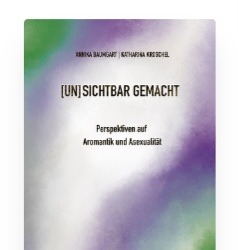

[un]sichtbar gemacht by katharina kroschel & annika baumgart
well researched essays on aromantic and asexual expieriences, history and facts. great place to start when new to the topic!
all die brennenden fragen by henri maximilian jakobs
all the (inappropriate) questions cisgender people tend to ask genderqueer and trans people answered from the perspective of a sarcastic trans man
gender-kram by louie läuger
german (and original) version of "rethinking gender", see above for a description. very helpful introduction, but also good for those who think they know everything (or themselves)


eine frau ist eine frau ist eine frau by phoenix kühnert
autobiographical essays on being a trans woman. sometimes emotional, sometimes snarky or sarcastic
ich bin linus: wie ich der mann wurde der ich immer schon war by linus giese
autobiographical essays on being a trans man. vulnerable, emotional and informative writing
freunde lieben by ole liebl
To Be Seen. Queer Lives 1900-1950 by Karolina Kühn & Mirjam Zadoff
fiction recs based on my more recent reads & (physical) tbr
wasteland by christian vogt & judith c. vogt (first german novel to use multiple sets of neutral pronouns and using a gender neutral/inclusive language, batshit ya/na dystopian sci fi fantasy but FUN)
paradiesische zustände by henri maximilian jakobs (a trans man reflects on his journey of self discovery. there's a lot of fries mentioned)
blutbuch by kim de l'horizon (literary work about a genderqueer persons reflection on their identity and family history)
#bookworm tag#book recommendations#idahobit#idahobita#mine#queer studyblr#queer uniblr#queer bookblr#knife gang
17 notes
·
View notes
Photo

Anton Schweighofer’s (1930-2019) work was deeply devoted to the human being and its needs. His housing estates, schools, kindergartens and SOS children’s villages all revolve around the community and how it is made up of individuals that need both the collective and the possibility to retreat. That Schweighofer gave extensive thought to the requirements of the inhabitants also becomes clear in the present monograph: „Anton Schweighofer - der stille Radikale“, edited by Christian Kühn and published by Springer Verlag in 2000. It contains some 40 pages of interviews with Schweighofer in which he reflects on his design ethos, freedom in architecture or his decade long teaching at the Technical University in Vienna. But the major part of the book is of course devoted to his built work: it features some 20 projects from the 1960s to the late 1990s and therefore provides a thorough cross section of Schweighofer’s complex work, especially because each project is presented in photographs, plans and additional texts that carry the reader through the genesis of each project. I have always been fascinated with Schweighofer and his approach to architecture but until this book really hadn’t been able to dig deeper into his architectural cosmos. Luckily „Der stille Radikale“ indeed allows for comprehensive insights into his built work as well as his theoretical considerations and consequently is the go-to reference work on this sometimes undervalued (just look what happened to his „Stadt des Kindes“) architect!
11 notes
·
View notes
Text
By Carl Christian Heinrich Kühn in 1907 and depicts 3 of his children: Lotte, Hans & Walter.

0 notes
Text
FDP auf dem Holzweg: Lindners Zweiklassen-Gesellschaft
Tichy:»Am Samstag probte die FDP das Pfeifen, zwar nicht im Wald, sondern auf ihrem Landesparteitag in Duisburg. Christian Lindner tat das, was er verläßlich immer macht, wenn er ebenfalls wie immer wieder den Grünen in Nibelungentreue kühn gefolgt ist, nämlich eine Rede mit an hohlen Effekten nicht geizenden Rede gegen die Ampel und gegen die Der Beitrag FDP auf dem Holzweg: Lindners Zweiklassen-Gesellschaft erschien zuerst auf Tichys Einblick. http://dlvr.it/T5Ww3J «
0 notes
Text
On this day in Wikipedia: Thursday, 31st August
Welcome, Benvenuto, Willkommen, Selam 🤗 What does @Wikipedia say about 31st August through the years 🏛️📜🗓️?

31st August 2021 🗓️ : Death - Mahal (actress) Mahal, Filipino comedian and actress (b. 1974) "Noemi Tesorero (December 29, 1974 – August 31, 2021), known professionally as Mahal, was a Filipino actress, comedian and vlogger. Noted for her childlike roles, she had dwarfism and a giggly personality...."
31st August 2018 🗓️ : Death - Carole Shelley Carole Shelley, British-American actress (b. 1939) "Carole Augusta Shelley (16 August 1939 – 31 August 2018) was an English actress who made her career in the United States and United Kingdom. Her many stage roles included Gwendolyn Pigeon in The Odd Couple and Madame Morrible in the original Broadway cast of the musical Wicked. She won the Tony..."

Image by Photographer-Henry Grossman
31st August 2013 🗓️ : Death - Jan Camiel Willems Jan Camiel Willems, Belgian mathematician and theorist (b. 1939) "Jan Camiel Willems (18 September 1939 – 31 August 2013) was a Belgian mathematical system theorist who has done most of his scientific work while residing in the Netherlands and the United States. He is most noted for the introduction of the notion of a dissipative system and for the development of..."
31st August 1973 🗓️ : Death - John Ford John Ford, American actor, director, producer, and screenwriter (b. 1894) "John Martin Feeney (February 1, 1894 – August 31, 1973), known professionally as John Ford, was an American film director. He was one of the most important and influential filmmakers of his generation. Ford made frequent use of location shooting and wide shots, in which his characters were framed..."

Image by Los Angeles Daily News
31st August 1921 🗓️ : Birth - Raymond Williams Raymond Williams, Welsh author and academic (d. 1988) "Raymond Henry Williams (31 August 1921 – 26 January 1988) was a Welsh socialist writer, academic, novelist and critic influential within the New Left and in wider culture. His writings on politics, culture, the media and literature contributed to the Marxist critique of culture and the arts. Some..."

Image by GwydionM
31st August 1823 🗓️ : Birth - Galusha A. Grow Galusha A. Grow, American lawyer and politician, 28th Speaker of the United States House of Representatives (d. 1907) "Galusha Aaron Grow (August 31, 1823 – March 31, 1907) was an American politician, lawyer, writer and businessman, who served as 24th Speaker of the U.S. House of Representatives from 1861 to 1863. Elected as a Democrat in the 1850 congressional elections, he switched to the newly organized..."

Image by Matthew Brady and Levin Corbin Handy
31st August 🗓️ : Holiday - Christian feast day: Paulinus of Trier "Saint Paulinus of Trier (died 358) was bishop of Trier and a supporter of Athanasius in the conflict with Arianism. At the Synod of Arles (353) he was targeted by the Arians, and was exiled to Phrygia, being effectively singled out by the Emperor Constantius II. He died in exile five years later,..."

Image licensed under CC BY-SA 3.0? by Stefan Kühn
0 notes
Text
Parallelized Acquisition of Orbitrap and Astral Analyzers Enables High-Throughput Quantitative Analysis.
Hamish Stewart, Dmitry Grinfeld, Anastassios Giannakopulos, Johannes Petzoldt, Toby Shanley, Matthew Garland, Eduard Denisov, Amelia Peterson, Eugen Damoc, Martin Zeller, Tabiwang N.Arrey, Anna Pashkova, Santosh Renuse, Amirmansoor Hakimi, Andreas Kühn, Matthias Biel, Arne Kreutzmann, Bernd Hagedorn, Immo Colonius, Adrian Schütz, Arne Stefes, Ankit Dwivedi, Daniel Mourad, Max Hoek, Bastian Reitemeier, Philipp Cochems, Alexander Kholomeev, Robert Ostermann, Gregor Quiring, Maximilian Ochmann, Sascha Möhring, Alexander Wagner, André Petker, Sebastian Kanngiesser, Michael Wiedemeyer, Wilko Balschun, Daniel Hermanson, Vlad Zabrouskov, Alexander Makarov and Christian Hock.
Pre-print, 2023
Summary/Figures:
Fig 1- schematic- astral uses orbitrap as intact mass analyzer, then ions are routes/guided through multipole and octapole into a high pressure region, then a low pressure region where they are ejected into the astral analyzer. ions then move back along the mirrors until they are fully reflected and detected i nthe front of the analyzer
key feature is that the high pressure chamber allows pooling of ions at the same time as that the low pressure chamber is ejecting them into the astral, enables much faster times than other mass analyzer setups
fig 2- timing schema for each section- 4 packets of ions can be in processing at once b/c steps are so fast but also separate
fig 3- MS1 in orbitrap can be done t the same time as MS2 in the astral
fig 4- resolution remains high across a wide mass range and at two different ion injection levels, mass shift remains low and consistent at wide mass range and two different ion injection levels. would be useful to see orbitrap data overlaid on this.
fig 5- mass jitter across m/z range is mostly consistent, it gets slightly higher. 3sigma jitter seems to basically be the 3x the standard deviation of the measured mas for the handful of peaks plotted here, so jitter is just a measure of deviation, (?)
fig 6- mass shift of a specified calibration peak over 70 hours is within 1m/z shift, text states that this was compared to an intemrittent internal calibration, but it is unclear how that would be done simultaneously and all of the data points for both masses are continuous
fig 7- the correction for temperature based on the internal calibrant keep mass error much closer to 0
fig 8- higher accumulation time in the in the trap results in lower scan rate- this is because a greater proportion of the duty cycle is occupied by ion accumulation leaving less total time for scans, however if the accumulation time is left constant then the scan frequency is constant
fig 9- comparison of ion countrs between corrected and uncorrected data, based on astral coutnrs relative to orib counts, where even the uncorrected astral counts are 100%- 150% higher
fig 10- astral spectra include more peaks for the same # of measured ions of a given compound, also shows that resolution values for the astral stay around 100k but orbi resolution is much lower
fig 11- protein group and peptide identification increase with experiment time
fig 12- proteome mixtures can be accurately identified using the astral, CV values for protein ID's are very low
fig 13- similar experiment, but with DIA on hela cells. Successfully identified many peptides and proteins both with and without libraries, increasing with loading mass (these are expected results)
Questions:
resolving power vs resolution?- resolution is the ability to separate peaks in a mass spectra (describes the peak themselves), whereas resolving power is the ability of the mass spec to separate the peaks (a property/parameter),
relation of repetition rate (Hz), voltage, resolving power, m/z
are the Asymmetric Ion Mirrors actual glass mirrors, or are they some other kind of "mirror"?- they are metallic, the "mirroring" is achieved via voltage
scintillator- type of mass detector that can measure ionization, traditionally used for radiation, this is a portion of the mass detection system in the astral
hermetically sealed- sealing to prevent both gases and moisture from entering (not the same as airtight)
jitter- noise within a specified domain (?)
mass dependent correction (reference 40)-
Why does an orbitrap require 10 ions for a peak to be measured but the astral can measure single ions?
Why start with the Astral at 500% aGC target? What experiments went into determining this was a good level
How was data for figure 6 and 7 collected?
Does instrument resolution refer to the average of all the resolution of each individual peak?
0 notes
Text
Machine Movement Lab
https://www.frontiersin.org/articles/10.3389/frobt.2020.577900/full
The Esthetics of Encounter: A Relational-Performative Design Approach to Human-Robot Interaction
Petra Gemeinboeck
Department of Media Theory, University of Applied Arts Vienna, Vienna, Austria
Centre for Transformative Media Technologies, School of Arts, Social Sciences and Humanities, Swinburne University of Technology, Melbourne, VIC, Australia
This article lays out the framework for relational-performative esthetics in human-robot interaction, comprising a theoretical lens and design approach for critical practice-based inquiries into embodied meaning-making in human-robot interaction. I explore the centrality of esthetics as a practice of embodied meaning-making by drawing on my arts-led, performance-based approach to human-robot encounters, as well as other artistic practices. Understanding social agency and meaning as being enacted through the situated dynamics of the interaction, I bring into focus a process of bodying-thinging; entangling and transforming subjects and objects in the encounter and rendering elastic boundaries in-between. Rather than serving to make the strange look more familiar, aesthetics here is about rendering the differences between humans and robots more relational....
References
Airenti, G. (2015). The cognitive bases of anthropomorphism: from relatedness to empathy. Int. J. Soc. Robot. 7, 117–127. doi:10.1007/s12369-014-0263-x
CrossRef Full Text | Google Scholar
Alač, M. (2015). Social robots: things or agents?. AI Soc. 31 (1), 519–535. doi:10.1007/s00146-015-0631-6
CrossRef Full Text | Google Scholar
Alač, M. (2011). When a robot is social: spatial arrangements and multimodal semiotic engagement in the practice of social robotics. Soc. Stud. Sci. 41 (6), 893–926. doi:10.1177/0306312711420565
PubMed Abstract | CrossRef Full Text | Google Scholar
Alexander, T. (2013). The human eros: eco-ontology and the aesthetics of existence. New York, NY: Fordham University Press.
CrossRef Full Text | Google Scholar
Aviv, V. (2017). Abstracting dance: detaching ourselves from the habitual perception of the moving body. Front. Psychol. 8, 776. doi:10.3389/fpsyg.2017.00776
PubMed Abstract | CrossRef Full Text | Google Scholar
Bal, M. (2015). “Documenting what? Auto-theory and migratory aesthetics,” in A companion to contemporary documentary film. Editors A. Juhasz and A. Lebow (NJ: Hoboken), 124–144. doi:10.1002/9781118884584.ch6
Barad, K. (2007). Meeting the universe halfway: quantum physics and the entanglement of matter and meaning. Durham, NC: Duke University Press.
CrossRef Full Text | Google Scholar
Barad, K. (2003). Posthumanist performativity: toward an understanding of how matter comes to matter. Signs. 28 (3), 801–831. doi:10.1086/345321
CrossRef Full Text | Google Scholar
Bartenieff, I., and Dori, L. (1980). Body movement; coping with the environment. New York, NY: Gordon and Breach.
CrossRef Full Text | Google Scholar
Bennett, J. (2012). Practical aesthetics events: affects and art after 9/11. New York, NY: Bloomsbury.
CrossRef Full Text | Google Scholar
Bianchini, S., and Quinz, E. (2016). “Behavioral objects: a case study,” in In behavioral objects 1—a case study: celeste boursier-mougenot. Editors S. Bianchini, and E. Quinz (Berlin, DE: Sternberg Press), 5–28.
CrossRef Full Text | Google Scholar
Billard, A., Calinon, S., Dillmann, R., and Schaal, S. (2008). “Robot programming by demonstration,” in In springer handbook of robotics. Editors B. Siciliano, and O. Khatib (Berlin, DE: Springer-Verlag), 1371–1394.
CrossRef Full Text | Google Scholar
Boer, L., and Bewley, H. (2018). “Reconfiguring the appearance and expression of social robots by acknowledging their otherness,” in Proceedings of the 2018 designing interactive systems conference. (New York, NY: ACM), 667–677. doi:10.1145/3196709.3196743
Bombari, D., Schmid Mast, M., Canadas, E., and Bachmann, M. (2015). Studying social interactions through immersive virtual environment technology: virtues, pitfalls, and future challenges. Front. Psychol. 6, 869–911. doi:10.3389/fpsyg.2015.00869
PubMed Abstract | CrossRef Full Text | Google Scholar
Breazeal, C., Brooks, A., Gray, J., Hancher, M., McBean, J., Stiehl, D., et al. (2003). Interactive robot theatre. Commun. ACM. 46 (7), 76–85. doi:10.1145/792704.792733
CrossRef Full Text | Google Scholar
Brunete, A., Ranganath, A., Segovia, S., de Frutos, J. P., Hernando, M., and Gambao, E. (2017). Current trends in reconfigurable modular robots design. Int. J. Adv. Rob. Syst. 14 (3), 1–21. doi:10.1177/1729881417710457
CrossRef Full Text | Google Scholar
Castañeda, C., and Suchman, L. (2014). Robot visions. Soc. Stud. Sci. 44 (3), 315–341. doi:10.1177/0306312713511868
PubMed Abstract | CrossRef Full Text | Google Scholar
Dautenhahn, K. (2013). “Human-robot interaction,” in In Encyclopedia of human-computer interaction. Editors M. Soegaard, R. F. D. Dam, and K. Aarhus. 2nd Edn (Aarhus, Denmark: Interaction Design Foundation), 2283–2366.
CrossRef Full Text | Google Scholar
Dautenhahn, K., Nehaniv, C., and Alissandrakis, A. (2003). “Learning by experience from others—social learning and imitation in animals and robots,” in Adaptivity and learning: an interdisciplinary debate. Editors R. Kühn, R. Menzel, W. Menzel, U. Ratsch, M. Richter, and I. Stamatescu (Berlin, Germany: Springer), 217–421.
CrossRef Full Text | Google Scholar
De Graaf, M. M., and Allouch, S. B. (2013). Exploring influencing variables for the acceptance of social robots. Robot. Autonom. Syst. 61 (12), 1476–1486. doi:10.1016/j.robot.2013.07.007
CrossRef Full Text | Google Scholar
De Jaegher, H., Pieper, B., Clénin, D., and Fuchs, T. (2017). Grasping intersubjectivity: an invitation to embody social interaction research. Phenomenol. Cognitive Sci. 16, 491–523. doi:10.1007/s11097-016-9469-8
CrossRef Full Text | Google Scholar
Demers, L.-P. (2016). “The multiple bodies of a machine performer,” in Robots and art: exploring an unlikely symbiosis. Editors H. Damith, K. Christian, and Stelarc (Singapore, SG: Springer), 273–306. doi:10.1007/978-981-10-0321-9_14
Despret, V. (2013). Responding bodies and partial affinities in human-animal worlds. Theor. Cult. Soc. 30 (7-8), 51–76. doi:10.1177/0263276413496852
CrossRef Full Text | Google Scholar
Dewey, J. (1934). Art as experience. J. Philos. 31 (10), 275–276.
CrossRef Full Text | Google Scholar
Di Paolo, E., Rohde, M., and De Jaegher, H. (2010). “Horizons for the enactive mind: values, social interaction, and play,” in Enaction: towards a New Paradigm for Cognitive Science. Editors J. Stewart, O. Gapenne, and E. Di Paolo (Cambridge, MA: MIT Press), 33–87.
CrossRef Full Text | Google Scholar
Dimitrova, Z. (2017). Robotic performance: an ecology of response. Performance Philosophy. 3 (1), 162–177. doi:10.21476/PP.2017.3135
CrossRef Full Text | Google Scholar
Dourish, P. (2001). Where the Action is. Cambridge, MA: MIT Press.
CrossRef Full Text | Google Scholar
Eckersall, P., Grehan, H., and Scheer, E. (2017). New media dramaturgy: performance, media and new-materialism. London, United Kingdom: Palgrave Macmillan.
CrossRef Full Text | Google Scholar
Fischer-Lichte, E. (2008). The transformative power of performance: a new aesthetics. Oxford, United Kingdom: Routledge.
CrossRef Full Text | Google Scholar
Foster, S. L. (2000). “Foreword,” in My body the buddhist. Editor D. Hay (Hanover, NH: Wesleyan University Press).
CrossRef Full Text | Google Scholar
Frauenberger, C. (2019). Entanglement HCI the next wave? ACM Trans. Comput. Hum. Interact. 27 (1), 1–27. doi:10.1145/3364998
CrossRef Full Text | Google Scholar
Froese, T., and Fuchs, T. (2012). The extended body: a case study in the neuro-phenomenology of social interaction. Phenomenol. Cognitive Sci. 11, 205–236. doi:10.1007/s11097-012-9254-2
CrossRef Full Text | Google Scholar
Fuchs, T., and Koch, S. (2014). Embodied affectivity: on moving and being moved. Front. Psychol. 5 (3), 508–512. doi:10.3389/fpsyg.2014.00508
PubMed Abstract | CrossRef Full Text | Google Scholar
Fuchs, T. (2016). “Intercorporeality and interaffectivity,” in Intercorporeality: emerging socialities in interaction. Editors C. Meyer, J. Streeck, and S. Jordan (Oxford, United Kingdom: Oxford University Press). doi:10.1093/acprof:oso/9780190210465.003.0001
CrossRef Full Text | Google Scholar
Gallagher, S. (2005). How the body shapes the mind. Oxford, United Kingdom: Oxford University Press.
CrossRef Full Text | Google Scholar
Gamble, C. N., Hanan, J. S., and Nail, T. (2019). What is new materialism? Angelaki. 24 (6), 111–134. doi:10.1080/0969725X.2019.1684704
CrossRef Full Text | Google Scholar
Gemeinboeck, P. (2019). “Dancing with the nonhuman,” in Thinking in the world. Editors J. Bennett, and M. Zournazi (London, United Kingdom: Bloomsbury Academic), 214–239.
CrossRef Full Text | Google Scholar
Gemeinboeck, P., and Saunders, R. (2019). “Exploring social co-presence through movement in human robot encounters,” in Proceeding of the AISB 2019 Symposium on Movement that shapes behaviour, Falmouth, United Kingdom, April 2019. http://aisb2019.machinemovementlab.net/MTSB2019_Gemeinboeck_Saunders.pdf (Accessed June 20 2020).
CrossRef Full Text | Google Scholar
Gemeinboeck, P., and Saunders, R. (2018). “Human-robot kinesthetics: mediating kinesthetic experience for designing affective non-humanlike social robots,” in Proceedings of the 2018 IEEE RO-MAN: the 27th IEEE International Conference on Robot and human interactive communication. New York, NY: IEEE, 571–576. doi:10.1109/ROMAN.2018.8525596
CrossRef Full Text | Google Scholar
Gemeinboeck, P., and Saunders, R. (2017). Movement matters: how a robot becomes body. In Proceedings of the 4th International Conference on Movement Computing (MOCO’17), London United Kingdom, June, 2017, 1–8.
CrossRef Full Text | Google Scholar
Gemeinboeck, P., and Saunders, R. (2016a). “The performance of creative machines,” in In cultural robotics. CR 2015. Lecture notes in computer science 9549. Editors J.T. K. V. Koh, B. J. Dunstan, D. Silvera-Tawil, and M. Velonaki. (Cham, Switzerland: Springer), 159–172. doi:10.1007/978-3-319-42945-8_13
CrossRef Full Text | Google Scholar
Gemeinboeck, P., and Saunders, R. (2016b). “Towards socializing non-anthropomorphic robots by harnessing dancers’ kinesthetic awareness,” in In cultural robotics. CR 2015. Lecture notes in computer science 9549. Editors J.T. K. V. Koh, B. J. Dunstan, D. Silvera-Tawil, and M. Velonaki (Cham, Switzerland: Springer), 85–97. doi:10.1007/978-3-319-42945-8_8
CrossRef Full Text | Google Scholar
Gibson, E. J. (1963). Perceptual learning. Ann. Rev. Psychol. 14, 29–56. doi:10.1146/annurev.ps.14.020163.000333
Gibson, J. J. (1979). The ecological approach to visual perception. Boston, MA: Houghton Mifflin.
CrossRef Full Text | Google Scholar
Haraway, D. (1989). Primate visions: gender, race and nature in the world of modern science. New York, NY: Routledge.
CrossRef Full Text | Google Scholar
Haraway, D. (2003). The companion species manifesto: dogs, people, and significant otherness. Chicago, IL: Prickly Paradigm Press.
CrossRef Full Text | Google Scholar
Haraway, D. J. (2008). When species meet. Minneapolis, MN: University of Minnesota Press.
Hayles, N. K. (1999). How we became Posthuman: virtual bodies in cybernetics, literature, and Informatics. Chicago, IL: University of Chicago Press.
CrossRef Full Text | Google Scholar
Hegel, F., Muhl, C., Wrede, B., Hielscher-Fastabend, M., and Sagerer, G. (2009). “Understanding social robots,” in Proceedings of the Second International Conferences on Advances in computer-human interaction, Cancun, Mexico, February 2009. New York, NY: IEEE, 169–174.
CrossRef Full Text | Google Scholar
Hegel, F. (2012). “Effects of a robot’s aesthetic design on the attribution of social capabilities,” in Proceedings of the 2012 IEEE RO-MAN: the 21st IEEE International Symposium on Robot and human interactive communication, Paris, France, September 2012. New York, NY: IEEE, 469–475. doi:10.1109/ROMAN.2012.6343796
CrossRef Full Text | Google Scholar
Hoffman, G., and Ju, W. (2014). Designing robots with movement in mind. JHRI., 3, 89–122. doi:10.5898/JHRI.3.1
CrossRef Full Text | Google Scholar
Hoffman, G., and Weinberg, G. (2011). Interactive improvisation with a robotic marimba player. Aut. Robots. 31 (2–3), 133–153. doi:10.1007/s10514-011-9237-0
CrossRef Full Text | Google Scholar
Hylving, L. (2017). Sociomaterial quasi-objects: from interface to experience. AIS Trans. Hum.-Comput. Interact. 9 (3), 202–219. doi:10.17705/1thci.00095
CrossRef Full Text | Google Scholar
Jochum, E., and Goldberg, K. (2016). “Cultivating the uncanny: the Telegarden and other oddities,” in In Robots and art: Exploring an unlikely symbiosis. Editors D. Herath, C. Kroos, and Stelarc (Singapore: Springer), 149–175.
CrossRef Full Text | Google Scholar
Jochum, E., Millar, P., and Nuñez, D. (2017). Sequence and chance: design and control methods for entertainment robots. Robot. Autonom. Syst. 87, 372–380. doi:10.1016/j.robot.2016.08.019
CrossRef Full Text | Google Scholar
Jochum, E., Vlachos, E., Christoffersen, A., Nielsen, S., Grindsted, H., and Ibrahim, A. (2016). Using theatre to study interaction with care robots. Int. J. Soc. Robot. 8 (4), 457–470. doi:10.1007/s12369-016-0370-y
CrossRef Full Text | Google Scholar
Johnson, M. (2018). The aesthetics of meaning and thought: the bodily Roots of philosophy. Chicago, IL: University of Chicago Press.
CrossRef Full Text | Google Scholar
Johnson, M. (2007). The meaning of the body: aesthetics of human understanding. Chicago, IL: University of Chicago Press.
CrossRef Full Text | Google Scholar
Jones, R. A. (2018). “Human-robot relationships,” in In posthumanism: the Future of Homo sapiens. Editors M. Bess, and D. W. Pasulka (Farmington Hills, MI: Macmillan), 365–375.
CrossRef Full Text | Google Scholar
Jones, R. A. (2017). What makes a robot “social”? Soc. Stud. Sci. 47 (4), 556–579. doi:10.1177/0306312717704722
PubMed Abstract | CrossRef Full Text | Google Scholar
Jørgensen, J. (2019). Constructing soft robot aesthetics: art, sensation, and Materiality in practice. PhD thesis. Copenhagen, Denmark: IT University of CopenhagenAvailable at: https://pure.itu.dk/portal/files/84722485/PhD_Thesis_Final_Version_Jonas_J_rgensen.pdf ( Accessed October 11, 2020).
CrossRef Full Text | Google Scholar
Kac, E. (1997). Foundation and development of robotic art. Art J. 56 (3), 60–67. doi:10.1080/00043249.1997.10791834
CrossRef Full Text | Google Scholar
Karg, M., Samadani, A. A., Gorbet, R., Kühnlenz, K., Hoey, J., and Kulić, D. (2013). Body movements for affective expression: a survey of automatic recognition and generation. IEEE Trans. Affective Comput. 4 (4), 341–359. doi:10.1109/T-AFFC.2013.29
CrossRef Full Text | Google Scholar
Knight, H., and Simmons, R. G. (2014). “Expressive motion with x, y and theta: Laban Effort Features for mobile robots,” in Proceedings of the 2014 IEEE RO-MAN: 23rd IEEE international symposium on robot and human interactive communication. (New York, NY: IEEE), 267–273. doi:10.1109/roman.2014.6926264
Koch, S. C. (2014). Rhythm is it: effects of dynamic body feedback on affect and attitudes. Front. Psychol. 5 (3), 537–611. doi:10.3389/fpsyg.2014.00537
PubMed Abstract | CrossRef Full Text | Google Scholar
Kroos, C., Herath, D.C., and Stelarc, (2012). Evoking agency: attention model and behavior control in a robotic art installation. Leonardo 45 (5), 401–407. doi:10.1162/leon_a_00435
PubMed Abstract | CrossRef Full Text | Google Scholar
Laban, R. (1972). “The Mastery of movement.” Revised and enlarged by lisa ullmann. 3rd Edn. Boston, MA: PLAYS Inc..
CrossRef Full Text | Google Scholar
Lasseter, J. (2001). Tricks to animating characters with a computer. ACM Siggraph Computer Graphics. 35 (2), 45–47. doi:10.1145/563693.563706
CrossRef Full Text | Google Scholar
Latour, B. (1993). We have never been modern. Cambridge, MA: Harvard University Press.
CrossRef Full Text | Google Scholar
LaViers, A., Cuan, C., Maguire, C., Bradley, K., Mata, K. B., Nilles, A., et al. (2018). Choreographic and somatic approaches for the development of expressive robotic systems. Arts. 7 (2), 1–21. doi:10.3390/arts7020011
CrossRef Full Text | Google Scholar
Leach, J., and deLahunta, S. (2017). Dance becoming knowledge: designing a digital “body”. Leonardo. 50 (5), 461–467. doi:10.1162/LEON_a_01074
CrossRef Full Text | Google Scholar
Lee, H. R., Šabanović, S., and Stolterman, E. (2016). “How humanlike should a social robot be: a user-centered exploration,” in Proceedings of the AAAI Spring Symposium on Enabling Computing Research in Socially Intelligent Human-Robot Interaction. (Palo Alto, CA: AAAI), 135–141. Available at: https://www.aaai.org/ocs/index.php/SSS/SSS16/paper/viewFile/12751/11934 (Accessed October 10, 2020).
CrossRef Full Text | Google Scholar
Levillain, F., and Zibetti, E. (2017). Behavioural objects: the rise of the evocative machines. JHRI. 6 (1), 4–24. doi:10.5898/JHRI.6.1.Levillain
CrossRef Full Text | Google Scholar
Lindblom, J. (2020). A radical reassessment of the body in social cognition. Front. Psychol. 11, 987. doi:10.3389/fpsyg.2020.00987
PubMed Abstract | CrossRef Full Text | Google Scholar
Lindblom, J., and Alenljung, B. (2020). The ANEMONE: theoretical foundations for UX evaluation of action and intention recognition in human-robot interaction. Sensors. 20 (15), 4284. doi:10.3390/s20154284
CrossRef Full Text | Google Scholar
Lindblom, J. (2015). Embodied social cognition. Berlin, Germany: Springer.
CrossRef Full Text | Google Scholar
Lindblom, J., and Ziemke, T. (2003). Social situatedness of natural and artificial intelligence: vygotsky and beyond. Adapt. Behav. 2003 (11), 79–96. doi:10.1177/10597123030112002
CrossRef Full Text | Google Scholar
Maher, M. L., Merrick, K., and Saunders, R. (2008). “Achieving creative behaviour using curious learning agents,” in AAAI spring symposium: creative intelligent systems’08, technical report SS-08-03. Editors D. Ventura, M. L. Maher, and S. Colton (Stanford, CA: AAAI)), 40–46.
CrossRef Full Text | Google Scholar
Malafouris, L. (2013). How things shape the mind: a theory of material engagement. Cambridge, MA: MIT Press.
CrossRef Full Text | Google Scholar
Manning, E., and Massumi, B. (2014). Thought in the act: Passages in the ecology of experience. Minneapolis, MN: University of Minnesota Press.
CrossRef Full Text | Google Scholar
McNeill, D. (1992). Hand and mind: what gestures reveal about thought. Chicago, IL: University of Chicago Press.
CrossRef Full Text | Google Scholar
Mindell, D. A. (2015). Our robots, ourselves: robotics and the myths of autonomy. New York, NY: Viking.
CrossRef Full Text | Google Scholar
Meier, B. P., Schnall, S., Schwarz, N., and Bargh, J. A. (2012). Embodiment in social psychology. Top Cogn Sci. 4 (4), 705–716. doi:10.1111/j.1756-8765.2012.01212.x
PubMed Abstract | CrossRef Full Text | Google Scholar
Noë, A. (2004). Action in perception. Cambridge, MA: MIT Press.
CrossRef Full Text | Google Scholar
Noë, A. (2009). Out of our heads: why you are not your brain, and other lessons from the biology of consciousness. New York, NY: Hill and Wang.
CrossRef Full Text | Google Scholar
Noland, C. (2009). “Coping and choreography,” in Proceeding of the Digital Arts and culture 2009 (DAC 09). Irvine, CA, December, 2009, UC Irvine. Available at: https://escholarship.org/uc/item/0gq729xq (Accessed April 17, 2020).
CrossRef Full Text | Google Scholar
Osborne, H. (1986). Interpretation in science and in art. Br. J. Aesthet. 26 (1), 3–15. doi:10.1093/bjaesthetics/26.1.3
CrossRef Full Text | Google Scholar
Paauwe, R. A., Hoorn, J. F., Konijn, E. A., and Keyson, D. V. (2015). Designing robot embodiments for social interaction: affordances topple realism and aesthetics. Int. J. Soc. Robot. 7, 697–708. doi:10.1007/s12369-015-0301-3
CrossRef Full Text | Google Scholar
Penny, S. (2000). “Agents as artworks: and agent design as artistic practice,” in Human Cognition and Social Agent Technology. Editor K. Dautenhahn (Amsterdam, NL: John Benjamins Publishing Company), 395–414. doi:10.1075/aicr.19
CrossRef Full Text | Google Scholar
Penny, S. (2017). Making sense: cognition, computing, art, and embodiment. Cambridge, MA: MIT Press.
CrossRef Full Text | Google Scholar
Penny, S. (2016). “Robotics and art, computationalism and embodiment,” in In Robots and art: Exploring an unlikely symbiosis. Editors H. Damith, and K. Christian (Singapore: Springer), 47–65.
CrossRef Full Text | Google Scholar
Penny, S. (2011). Towards a performative aesthetic of interactivity. Fibreculture J. 19, 72–108.
CrossRef Full Text | Google Scholar
Pfeifer, R., and Scheier, C. (1999). Understanding intelligence. Cambridge, MA: MIT Press.
CrossRef Full Text | Google Scholar
Piris, P. (2014). “The Co-presence and ontological ambiguity of the puppet,” in The routledge companion to puppet theatre. Editors D. N. Posner, C. Orenstein, and J. Bell. (London, United Kingdom: Routledge), 30–42. doi:10.4324/9781315850115.ch2
CrossRef Full Text | Google Scholar
Popat, S. H., and Palmer, S. D. (2005). Creating common ground: dialogues between performance and digital technologies. Int. J. Perform. Art. Digit. Media. 1 (1), 47–65. doi:10.1386/padm.1.1.47/1
CrossRef Full Text | Google Scholar
Rietveld, E., and Kiverstein, J. (2014). A rich landscape of affordances. Ecol. Psychol. 26 (4), 325–352. doi:10.1080/10407413.2014.958035
CrossRef Full Text | Google Scholar
Šabanović, S. (2010). Robots in society, society in robots: mutual shaping of society and technology as a framework for social robot design. Int. J. Soc. Robot. 2 (4), 439–450. doi:10.1007/s12369-010-0066-7
CrossRef Full Text | Google Scholar
Salvini, P., Laschi, C., and Dario, P. (2010). Design for acceptability: improving robots’ coexistence in human society. Int. J. Soc. Robot., 2, 451–460. doi:10.1007/s12369-010-0079-2
CrossRef Full Text | Google Scholar
Sandry, E. (2016). “The potential of otherness in robotic art,” in Robots and Art: Exploring an Unlikely Symbiosis. Editors H. Damith, and K. Christian (Singapore: Springer), 177–189.
CrossRef Full Text | Google Scholar
Saunders, R., and Gemeinboeck, P. (2018). “Performative Body Mapping for designing expressive robots.” In Proceedings of the 9th International Conference on Computational Creativity (Coimbra, PT: ACC), Salamanca, Spain, June, 2018, 280–287.
CrossRef Full Text | Google Scholar
Schleicher, D., Jones, P., and Kachur, O. (2010). Bodystorming as Embodied Designing. Interactions. 17 (6), 47–51. doi:10.1145/1865245.1865256
CrossRef Full Text | Google Scholar
Sheets-Johnstone, M. (2010). Kinesthetic experience: understanding movement inside and out. Body Movement Dance Psychother. 2, 111–127. doi:10.1080/17432979.2010.496221
CrossRef Full Text | Google Scholar
Sheets-Johnstone, M. (2012). From movement to dance. Phenom. Cogn. Sci. 11, 39–57. doi:10.1007/s11097-011-9200-8
CrossRef Full Text | Google Scholar
Sheets-Johnstone, M. (2011). “The primacy of movement.,” in Series on advances in consciousness research 14. 2nd Edition (Amsterdam, Netherlands: John Benjamins Publishing Company). doi:10.1075/aicr.14
CrossRef Full Text | Google Scholar
Sirkin, D., Mok, B., Yang, S., Maheshwari, R., and Ju, W. (2016). “Improving design thinking through collaborative improvisation” in Design thinking research., 93–108. Cham, Switzerland: Springer International Publishing. doi:10.1007/978-3-319-19641-1_7
PubMed Abstract | CrossRef Full Text | Google Scholar
St-Onge, D., Levillain, F., Zibetti, E., and Beltrame, G. (2019). Collective expression: how robotic swarms convey information with group motion. Paladyn. J. Behav. Rob. 10, 418–435. doi:10.1515/pjbr-2019-0033
CrossRef Full Text | Google Scholar
Stacey, J., and Suchman, L. (2012). Animation and automation: the liveliness and labours of bodies and machines. Body Soc. 18 (1), 1–46. doi:10.1177/1357034X11431845
CrossRef Full Text | Google Scholar
Suchman, L. A. (1987). Plans and situated action: the problem of human–machine communication. New York, NY: Cambridge University Press.
CrossRef Full Text | Google Scholar
Suchman, L. (2007a). Human-machine reconfigurations: Plans and situated actions. 2nd Edn. Cambridge, MA: Cambridge University Press.
CrossRef Full Text | Google Scholar
Suchman, L. (2007b). “Agencies in technology design: feminist reconfigurations” in hackett,” in The handbook of science and technology studies. Editors O. Amsterdamska, M.E. Lynch, and J. Wajcman. 3rd Edn (Cambridge, MA: The MIT Press).
CrossRef Full Text | Google Scholar
Suchman, L. (2011). Subject objects. Fem. Theor. 12 (2), 119–145. doi:10.1177/1464700111404205
CrossRef Full Text | Google Scholar
Suschke, S. (2003). Müller macht Theater: Zehn Inszenierungen und ein Epilog. Berlin: Theater der Zeit.
CrossRef Full Text | Google Scholar
Turkle, S. (2011). Alone together: why we expect more from technology and less from each other. New York, NY: Basic Books.
CrossRef Full Text | Google Scholar
Turkle, S. (2005). The second self: computers and the human spirit. 20th Edn. Cambridge, MA: The MIT Press.
CrossRef Full Text | Google Scholar
Uexküll, J. V. (1957). “A stroll through the worlds of animals and men: a picture book of invisible worlds,” in Instinctive behavior: the Development of a modern concept. Editor C. H. Schiller (New York, NY: International Universities Press), 5–80.
CrossRef Full Text | Google Scholar
Varela, F. J., Thompson, E., and Rosch, E. (1991). The embodied mind: cognitive science and human experience. Cambridge, MA: MIT Press.
CrossRef Full Text | Google Scholar
Vlachos, E., Jochum, E., and Demers, L.-P. (2016). The effects of exposure to different social robots on attitudes toward preferences. Interaction Studies 17 (3), 390–404. doi:10.1075/is.17.3.04vla
CrossRef Full Text | Google Scholar
Wright, P. (2011). Reconsidering the H, the C, and the I: some thoughts on reading suchman’s human-machine reconfigurations. Interactions. 18 (5), 28–31. doi:10.1145/2008176.2008185
CrossRef Full Text | Google Scholar
Yang, S., Mok, B. K.-J., SirkinIve, D. H. P., Maheshwari, R., Fischer, K., and Ju, W. (2015). “Experiences developing socially acceptable interactions for a robotic trash barrel,” in The 24th IEEE international symposium on robot and human interactive communication, Kobe, Japan, August, 2015 (New York, NY: IEEE), 277–284. doi:10.1109/ROMAN.2015.7333693
CrossRef Full Text | Google Scholar
Ziemke, T. (2002). Introduction to the special issue on situated and embodied cognition. Cognit. Syst. Res. 3, 271–274. doi:10.1016/S1389-0417(02)00068-2
CrossRef Full Text | Google Scholar
Ziemke, T., and Sharkey, N. (2001). A stroll through the worlds of robots and animals. Semiotica. 13 (1–4), 701–746. doi:10.1515/semi.2001.050
CrossRef Full Text | Google Scholar
Ziemke, T. (2016). The body of knowledge: on the role of the living body in grounding embodied cognition. Biosystems. 148, 4–11. doi:10.1016/j.biosystems.2016.08.005
PubMed Abstract | CrossRef Full Text | Google Scholar
Zivanovic, A. (2019). “Elegant, natural motion of robots: lessons from an artist” in Gemeinboeck,” in Proceedings of the AISB 2019 Symposium on Movement that shapes behaviour (MTSB’19). Editors P. Gemeinboeck, and R. Saunders. Available at: http://aisb2019.machinemovementlab.net/MTSB2019_Proceedings.pdf (Accessed June 21 2020).
CrossRef Full Text | Google Scholar
Keywords: human-robot interaction design, aesthetics, performativity, agency, design, movement
Citation: Gemeinboeck P (2021) The Esthetics of Encounter: A Relational-Performative Design Approach to Human-Robot Interaction. Front. Robot. AI 7:577900. doi: 10.3389/frobt.2020.577900
Received: 30 June 2020; Accepted: 14 December 2020; Published: 16 March 2021.
Edited by:
Elizabeth Ann Jochum
, Aalborg University, Denmark
Reviewed by:
Gregory J. Corness
, Columbia College Chicago, United States
Jonas Jørgensen
, University of Southern Denmark, Denmark
Copyright © 2021 Gemeinboeck. This is an open-access article distributed under the terms of the Creative Commons Attribution License (CC BY). The use, distribution or reproduction in other forums is permitted, provided the original author(s) and the copyright owner(s) are credited and that the original publication in this journal is cited, in accordance with accepted academic practice. No use, distribution or reproduction is permitted which does not comply with these terms.
*Correspondence: Petra Gemeinboeck, [email protected]
Add
3 notes
·
View notes
Photo




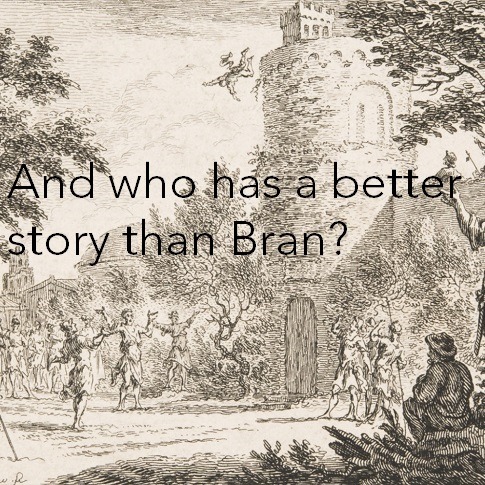

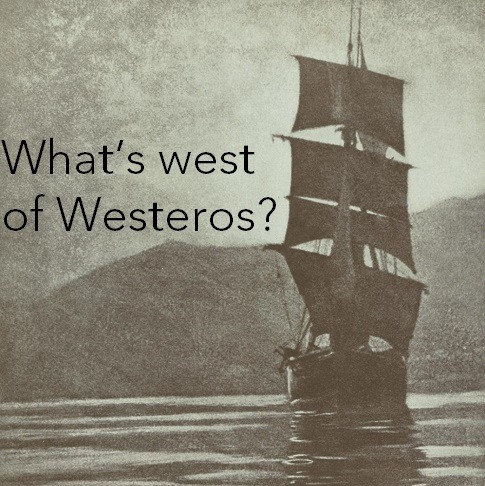

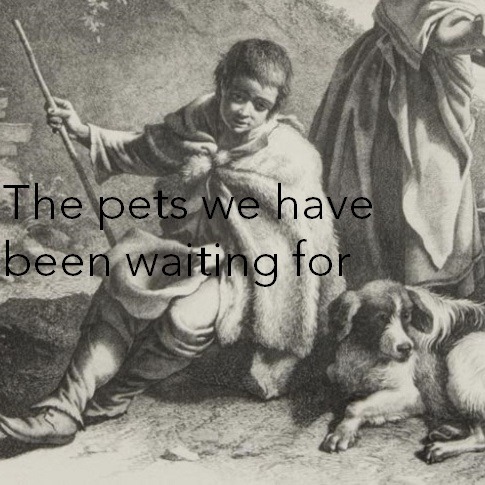

On the finale of Game of Thrones.
"Season's Greetings and Good Luck for 1940," 1940, by Fritz Eichenberg © Visual Artists and Galleries Assoc., Inc. (VAGA), New York
"The Bride of Lammermoor" (detail), by 1830, by Sir Edwin Landseer
"Dorie, Tom and I Play at Canson Beach," 1978, by Eugene Richards
"William, Prince of Orange," Late 19th–early 20th century, by Samuel Arlent-Edwards
"A City Wall with Man Falling from Ramparts," date unknown, by Simon Fokke
"Allegory of Writing" (detail), c. 1740, by Christian Wilhelm Ernst Dietrich
"Sicilian Bark," 1901, by Heinrich Kühn
"Portrait of a Lady," 1566, Netherlands
"Seated Herdsman and Woman Giving a Drink to a Boy" (detail), 1759–82, by Francesco Londonio
"Portrait of Thomas Eakins," c. 1920–25, by Susan Macdowell Eakins
#Game of Thrones#GOT#Game of Thrones finale#art#art museum#museum#art history#history#House Stark#Philadelphia Museum of Art#Philadelphia art museum#Philadelphia#Philly museum of art#Philly art museum#Philly
126 notes
·
View notes
Photo
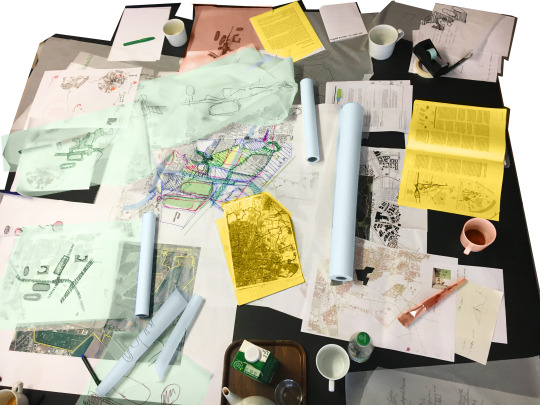

S T A D T D E R V I E L E N
Stadterweiterung München Ost Wettbewerb, 2019, 2.Stufe In Zusammenarbeit mit: Imke Mumm, Julia Preschern, Max Ott, Norbert Kling, Julian Numberger, Peter Kühn, Christian Zöhrer, Andy Westner, Werner Schührer und Thomas Hess Link zum Download: Glossar Link Stadt München: www.muenchen.de/(...)Nordosten
Mehr gebaute Demokratie – Eine Chance für München. In München spitzen sich zahlreiche Debatten zu, die in allen prosperierenden Städten derzeit geführt werden. Hier wird nicht nur über Boden, Spekulation, Eigentum, Wachstum und Veränderung gestritten, sondern auch nach neuen Wegen für eine gemeinwohlorientierte Stadtentwicklung gesucht, die sich an Fragen von Bezahlbarkeit, Zugänglichkeit und Verlässlichkeit ausrichten.
Die Landeshauptstadt hat im Münchner Nordosten einen Ideenwettbewerb für eine der letzten großen Entwicklungsflächen ausgelobt. Für eine Fläche von 600 Hektar werden dabei drei große Masterpläne gefordert. Diese Vorgaben laufen krampfhaft auf die Darstellung fertiger Stadtquartiere hinaus. Aber so leichtsinnig sollte die Chance, die konkreten Bedingungen und die Art und Weise der Veränderung des Münchner Nordostens zu definieren, nicht vergeben werden. Es geht um etwas Grundsätzlicheres.
Wem gehört die Stadt? Angesichts der rasanten Bodenpreisentwicklung schlagen wir vor, die Grundstücke im Münchner Nordosten über die Städtebauliche Entwicklungsmaßnahme zu kommunalisieren und ausschließlich im Erbbaurecht zur Bebauung und Nutzung weiterzugeben.
Wer plant die Planung? Eine Entwicklungsgenossenschaft für das Planungsgebiet und Parlamente der Nachbarschaften auf den Quartiersebenen ermöglichen echte Teilhabe und Mitgestaltung an Transformationsprozessen, die bereits heute beginnen können.
Stadt ist das was wir daraus machen! Die Stadt der Vielen ist in Bewegung und verändert sich mit Ihren Bewohner*innen. Innerhalb eines Rahmens aus Freiräumen und bestehenden Strukturen, lässt sie Gleichzeitigkeit zu und kann Unterschiedlichkeiten auf Dauer aufnehmen. Die Stadt der Vielen kann viel mehr Menschen Platz bieten, als es die Wettbewerbsauslobung zu denken wagt. Stadt ist ein Gemeingut, das kollektiv ausgehandelt werden muss. München geht uns alle an.
4 notes
·
View notes
Note
@maniculum I just found another very interesting source on the topic, and this one is even older than the Gesta Romanorum. In the 11th century, the Sufi scholar Ali al-Hujwiri recorded a (according to him well-known) story about Abú Ḥamza al-Khurásání:
It is a well-known story that one day he fell into a pit. After three days had passed a party of travellers approached. Abú Ḥamza said to himself: “I will call out to them.” Then he said: “No; it is not good that I seek aid from anyone except God, and I shall be complaining of God if I tell them that my God has cast me into a pit and implore them to rescue me.” When they came up and saw an open pit in the middle of the road, they said: “For the sake of obtaining Divine recompense (thawáb) we must cover this pit lest anyone should fall into it.” Abú Ḥamza said: “I became deeply agitated and abandoned hope of life. After they blocked the mouth of the pit and departed, I prayed to God and resigned myself to die, and hoped no more of mankind. When night fell I heard a movement at the top of the pit. I looked attentively. The mouth of the pit was open, and I saw a huge animal like a dragon, which let down its tail. I knew that God had sent it and that I should be saved in this way. I took hold of its tail and it dragged me out. A heavenly voice cried to me, ‘This is an excellent escape of thine, O Abú Ḥamza! We have saved thee from death by means of a death’” (i.e. a deadly monster).
To me, this sounds pretty similar, maybe it's a related tale or some kind of predecessor to the story in the Gesta Romanorum. Sara Kühn also noted some similarities to the tale of the man in the well in "The Dragon in Medieval East Christian and Islamic Art"
I just found your podcast and saw that you covered the Gesta Romanorum in a lot of episodes. Since they are pretty long, can you please tell me if the Episode about the man in the snake cave (Charles Swan translated the title as "Of Deliverance from Hell") is in one of them?
It isn't yet. I just checked, and it's one of the ones I have tagged to include in a future episode. If you like, I can make a note to do it the next time we revisit the Gesta Romanorum -- though that won't be for a while, as we have the next few months already planned out and Gesta Romanorum isn't on the schedule.
35 notes
·
View notes
Text
Das Wirtshaus im Spessart (Comödie Dresden)
Das Wirtshaus im Spessart (Comödie Dresden)
Story: Nach Jahren des Dornröschenschlafs erwacht das geschichtsträchtige Dresdner Barockschloss Übigau im Sommer 2019 zu neuem Leben und verwandelt sich zur Kulisse für Dresdens neues Open-Air-Theater direkt an der Elbe: die COMÖDIE IM SCHLOSS.
Nehmen Sie bei Getränken und Speisen aus der Sommerwirtschaft im Schlosshof Platz, wenn für Sie – und so manchen Halunken – das WIRTSHAUS IM SPESSART…
View On WordPress
#Aline Bachmann#Anne Konstanze Lahr#August Geyler#Christian Kühn#Clarissa Karnikowski#Das wirtshaus im Spessart#Das Wirtshaus im Spessart (1958)#Dresden#Franz Lenski#Kurt Hoffmann. Wilhelm Hauff#Laura Dittmann#Liselotte Pulver#omtesse Franziska von Sandau#Philipp Richter#Philipp Scholz#Quentin Tarantino#Rainer König#Schloss Übigau#Theater
0 notes
Text
Christian Kühn part ways with DEFEATED SANITY.

1 note
·
View note
Text
0 notes